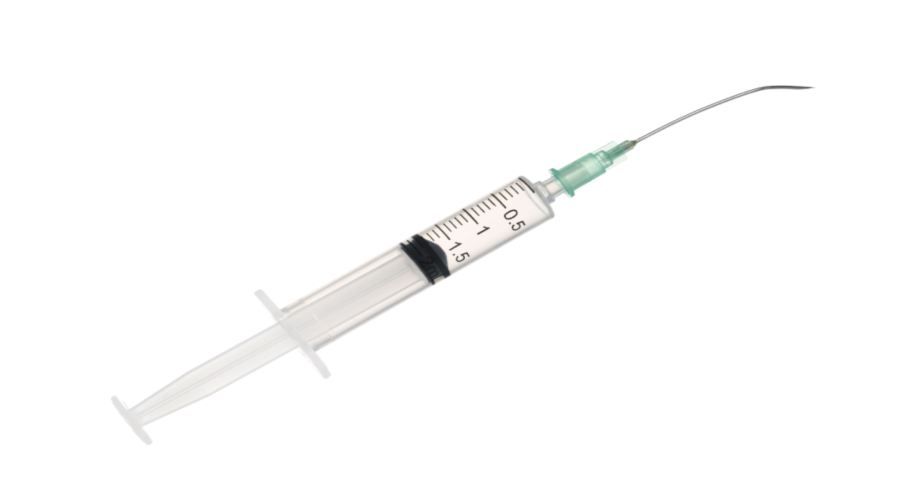Not so long ago, patients who wanted to get the flu shot had to trek to their primary care physician’s office or risk contagion at an urgent care clinic. The public, and lawmakers, didn’t yet understand the value of pharmacy-based immunizations for consumers and the healthcare system.
Even though some community pharmacies started offering mass immunizations in the ‘90s, it wasn’t until a change in laws in 2009 and aggressive marketing from the national chain pharmacies that people started to view the pharmacy as a legitimate provider of vaccinations. As CVS and Walgreens heavily promoted immunizations, more and more people started showing up at the pharmacy for their shots. Then, in just a few years, Walgreens was giving more than seven million flu immunizations a season.
Now, at least one third of all flu shots are given at the pharmacy, according to one analysis. This dramatic shift in public perception toward immunizations has provided pharmacies with a huge alternative source of revenue and traffic previously unavailable to them.
Kevin Day, owner of Day’s Miami Heights Pharmacy in Cincinnati, Ohio, believes it’s only a matter of time before we see this same shift in point-of-care testing. And he thinks COVID-19 could be the watershed moment. “COVID testing sites are great for all of pharmacy for changing public perception on what they should be expecting from their pharmacy,” he said. “With CVS or Walgreens or Walmart saying they do point-of-care testing, that will go a long way to changing things. What I hope for is that in the future patients will call and say, ‘I think I have the flu, do you test for that?’”
Special circumstances have historically opened doors for pharmacy opportunities. In fact, it was another global outbreak, H1N1, that precipitated the first laws in several states allowing pharmacists to administer vaccines. Those laws, which were meant to be a temporary triage during the pandemic, ended up persisting, and that’s when the national chains capitalized on the opportunity.
Even before the coronavirus pandemic arrived, a 2015 Deloitte study went so far to say that point-of-care testing will surpass immunizations as a revenue driver for retail pharmacies. If these predictions are accurate, pharmacies already providing point-of-care testing will be perfectly poised to capitalize on the shift, which would significantly expand opportunities for revenue. An analysis from GlobalData predicts the market for point-of-care testing to total nearly $3 billion in 2021.
Opportunity is now
Even if the shift in public perception is a long way off, there’s already demand for point-of-care testing at pharmacies. Lackie Drug, an independent pharmacy in Roanoke, Arkansas, gives up to 1,000 flu and strep tests every year. Tarrytown Pharmacy in Austin, Texas, gives up to 1,500 per year.
Notably, patients are paying cash for these services. Pharmacies charge anywhere from $25 to $125 per test for strep or flu. Shane’s Pharmacy in South Dakota, which administers about 700 strep tests at one of its locations annually, started at $25 but gradually increased the price to $45 without any disruption to demand. “People don’t blink an eye because if they go to the doctor’s office it costs $125 for a test if they have a high deductible,” said Shane Clarambeau, CEO of Shane’s.
Costs to the pharmacy for flu and strep testing are relatively low. Devices run a few hundred dollars and often come with a bundle of free tests. After that, you’re looking at roughly three dollars for a strep strip and thirteen for flu.
On top of the cash payment, patients will inevitably leave the pharmacy with another purchase, whether it’s a prescription to treat a positive case or some OTC items to treat the symptoms in a negative case. “Even if they’re negative, they still have symptoms that need treated, so we’re able to sell more over-the-counter products. And as you know, the over-the-counter products don’t have to go through PBMs, so the margins are better,” said Clarambeau. “So it’s an opportunity to raise revenue both in foot traffic and in selling things that people normally would have gone to Walgreens or Walmart for.”
CLIA Waiver
To perform point-of-care testing, pharmacies must acquire a Clinical Laboratory Improvement Amendments (CLIA) certificate of waiver through CMS. The Clinical Laboratory Improvement Amendments of 1988 establish quality standards for laboratory testing to ensure the accuracy, reliability, and timeliness of patient test results.
With a certificate of waiver, pharmacies are eligible to perform waived tests, which are defined as simple tests with a low risk for an incorrect result. Most rapid strep and flu tests are CLIA-waived, along with tests for HIV, lipids, Hep C, INR, and more. Find a full list of waived tests on the FDA website.
Other pharmacies may not get as much volume as Lackie Drug and Tarrytown Pharmacy, but they still find the service worth it for several reasons. “The image factor for us has been so helpful,” Day said. “Even before you do any test, just because you are speaking to a need and solving a problem for patients, you’re improving that image. You’re offering something no one else is offering. I think that image factor is a part of a whole progression as we move from a traditional pharmacy to a healthcare destination.”
“The fact that we offer these tests helps people think of us more of as a clinical destination and more well-rounded,” said Jana Bennett, owner of a Medicine Shoppe in Denison, Texas. “You know the chains don’t do this, the other independents in our town don’t do this, it just gives us more of a competitive edge.”
For Brandon Achor, owner of Lackie Drug, perhaps more valuable than the revenue is the tests’ ability to legitimize what is always taken for granted from pharmacists. “Pharmacists spend a lot of time selling something that’s not tangible: our knowledge, expertise, and assessment. This allows me to offer something that is tangible tied to that assessment,” he said.
Flu and strep testing has led to new patients for all of the pharmacies. Many people who had not heard of the pharmacy discovered them through the service and transferred their prescriptions. “It’s really nice in terms of it brings in a lot of new traffic,” said James Cong, director of business development at Tarrytown Pharmacy. “People hear about us being able to offer flu and strep tests when they or their children or family members are sick, so if they don’t fill here, that brings them in and exposes them to our business.”
It also brings current patients into the store more often. Clarambeau said, “It’s improved our image and we get a lot more walk-through traffic. We get a lot of drive-thrus—sometimes people never see the inside of the store until they come and get the strep test.”
For these pharmacies, flu and strep have provided the best business opportunity for point-of-care testing, but there are other types to offer as well. They may not be a magnet for traffic or result in a prescription at the end of the process, but they all add to the image of a healthcare destination and help patients in your community improve their health. Other point-of-care tests include lipids, A1C, hepatitis C, HIV, INR, and lab tests. Many of the pharmacies interviewed offer a few of these tests, but flu and strep make up the vast majority of the tests they sell.
“I started with flu and strep because it made sense for my pharmacy based on my patients,” Day said. “For a lot of pharmacies that may not be the case. If you have an urgent care in your front parking lot, it’s hard to compete with that. That person is a prescriber and can write the script. You may be lower cost but they’re more convenient at that point. On the flipside, if you’re in that part of the country with high HIV rate, maybe that’s what you should be providing for your community. Hepatitis C is another one, especially in underserved areas.”
Point-of-Care Possibilities
There are several tests beyond flu
and strep a pharmacy can offer. Patients are ready to go to you for these tests: According to a survey by Pharmacy Quality Solutions, 74 percent of patients would be comfortable with their pharmacists screening for blood pressure, cholesterol, and Hemoglobin A1C.
- Lipids
- A1C
- HIV
- Hep C
- INR
- Pharmacogenetics
- Lab tests
The point-of-care process
Implementing flu and strep testing is fairly simple. All of the pharmacies’ processes are very similar, resembling in many ways the routine of a physician’s office visit. First, patients fill out an intake form with essential information that helps the pharmacist ensure patient safety and provides prescribers with info they need. Standard information includes blood pressure, temperature, heart rate, drug allergies, primary physician, and basic demographics. They also go through a checklist of symptoms to make sure the patient qualifies for the test. For example, if the patient doesn’t have a fever, Day says, then they don’t have strep and can bypass the test altogether.
Then comes administering the test: a nasal swab for flu, a throat swab for strep. The swab is taken to the machine where it will deliver results within five to twenty minutes, depending on the machine. Meanwhile the pharmacist may speak with the patient about different options following a positive or negative result. This part of the process is really important, Achor said. “The customer base in the pharmacy is different than retail stores because the majority of them come to us on some level of fear. So what you’re really leveraging is that ten minutes of meeting their fears, helping them understand what to do if it’s positive or negative, and you’re handing them a results sheet that’s tangible, that says, ‘I went here and it was worth my time.’”
If the test is negative, the pharmacist recommends some OTC items. If positive, there are a several different approaches, depending on the pharmacy’s preferences and capabilities. Achor will call the primary care physician to get a script and then fill it while the patient waits. Cong sets the patient up with a telehealth call or refers them to their physician. Clarambeau writes the prescription himself, enabled by a collaborative practice agreement with a prescriber in his state. Bennett offers to text the patient the results if they don’t want to wait. Day gets the patient’s address and delivers the medication as soon as it’s ready, and no matter what the result is, he always follows up with a phone call within 48 hours.
None of the pharmacies have found the process to be too burdensome. “It doesn’t really disrupt your day. You think it’s a big commitment, it’s really not,” Bennett said. “You get your machine, you get trained, and then when someone comes, you just work them into your day. It’s not a big commitment of time or money, just another thing you can offer.”
Prescription Authority: Can You Prescribe Treatment for Strep and Flu?
The ability to prescribe treatment for flu and strep saves time, hassle, and resources required to contact and acquire a prescription for a prescriber. Here’s a breakdown from National Alliance of State Pharmacy Associations on the opportunities for prescribing flu and strep treatments.
Idaho pharmacists are allowed to prescribe products to treat strep/flu pursuant to a rapid diagnostic test.
Kentucky pharmacists can prescribe if they have a doctor to sign off on a pharmacist using the protocol.
Florida pharmacists can test and treat strep and flu under a protocol with a physician.
Fourteen states have CPA authority broad enough to allow pharmacists to prescribe pursuant to a rapid diagnostic test: ID, IL, MI, MN, MT, NE, NM, ND, SD, TN, UT, VT, WA, WI
Source: National Alliance of State Pharmacy Associations
Challenges of point-of-care testing
A natural apprehension of point-of-care testing is the response of area providers. After all, aren’t you stealing away their business? “At first I thought they wouldn’t want us to do it because they would miss out on office visits,” Bennett said. “But in reality, they are so busy in the fall and winter that they would rather just get the patient taken care of. They aren’t worried about a $20 or $50 dollar copay.”
Achor made a concerted effort to meet with all the providers in his area and demonstrate the tests and explain the protocol. He pitched it as a way to triage their non-emergency, acute patients so they can focus on more chronic and critical patient care. When flu season arrived, patients and providers were relieved that Achor provided them access to the tests. “Wait times were three to four hours long,” he said, speaking of the providers’ offices. “So I had people driving an hour and a half to my store because that was still shorter than the wait time to see a primary care provider.”
Once the providers are on board, your staff needs to be on board. Point-of-care testing can’t be successful if your pharmacists and the rest of the employees aren’t all in and aren’t properly trained, said Cong.
Crucially, technicians or other staff should perform the bulk of the process. “It’s not cost effective if the pharmacist is highly involved outside of interpretation of the results and counseling,” Achor explained. “So you really have to have high quality trained staff and technicians who can help them fill out the form and administer the test correctly, so the pharmacist spends a maximum of ten minutes addressing those concerns.” If the facility is CLIA-waived, any staff member can perform the test, he added.
For Clarambeau, another challenge has been children, who can be difficult to get a sample from. Day doesn’t test kids under 15 or adults over the age of 80, while children make up a large part of Tarrytown’s patients.
Ultimately, all of the pharmacies have found the challenges point-of-care testing to be minor. A low investment with a high return, point-of-care testing serves the needs of the community while generating revenue free from the grip of PBMs.
From the Magazine
This article was published in our quarterly print magazine, which covers relevant topics in greater depth featuring leading experts in the industry. Subscribe to receive the quarterly print issue in your mailbox. All registered independent pharmacies in the U.S. are eligible to receive a free subscription.
Read more articles from the September 2020 issue:
- Point of care testing: a cash business opportunity for pharmacy
- The key to a thriving CBD offering
- How to make the most of the cash sitting in your bank
- The ultimate track-and-trace (DSCSA) checklist for pharmacies
- How the pandemic has changed the way independent pharmacies do business
- Attract more shoppers to your pharmacy with one simple device
- How to provide a successful Medicare open enrollment service
- Creating a successful employee schedule: advice from industry experts
A Member-Owned Company Serving Independent Pharmacies
PBA Health is dedicated to helping independent pharmacies reach their full potential on the buy-side of their business. Founded and owned by pharmacists, PBA Health serves independent pharmacies with group purchasing services, wholesaler contract negotiations, proprietary purchasing tools, and more.
An HDA member, PBA Health operates its own NABP-accredited secondary wholesaler with more than 6,000 SKUs, including brands, generics, narcotics CII-CV, cold-storage products, and over-the-counter (OTC) products — offering the lowest prices in the secondary market.












